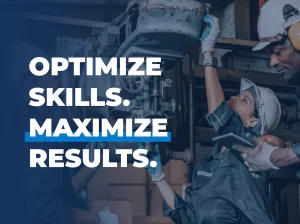
This lesson is designed for participants familiar with industrial process control, specifically single loop control and multiple loop control. A working knowledge of fluid flow characteristics, fluid flow measurement, and typical elements in process loops is recommended.
This lesson explains control valve selection factors and demonstrates typical linear and rotary control valve functions and applications. Control valve bodies for several types of valves including globe, butterfly, and ball valves are described. The function and components of valve trim, including the relationship between flow characteristic and trim type is explained.
This lesson is designed for participants familiar with industrial process control, specifically single loop control and multiple loop control, as well as control valve body types and trim. A working knowledge of fluid flow characteristics, fluid flow measurement, and typical elements in process loops is recommended.
This lesson trains participants to recognize, identify, and understand actuators and positioners as they relate to control valve trim. The parts and operation of diaphragm and piston actuators as well as pneumatic and electropneurnatic positioners are demonstrated.
This lesson is designed for participants familiar with industrial process control, specifically single loop control and multiple loop control, as well as control valve body types and trim, and positioners and actuators. A working knowledge of fluid flow characteristics, fluid flow measurement, and typical elements in process loops is recommended.
This lesson applies the concepts and terminology associated with control valve body types and trim, actuators and position? to the disassembly, repair, parts replacement and reassembly of linear and rotary action control valves. Symptoms of valve malfunctions, lapping, and post-repair tests are also covered.
This lesson is designed for participants familiar with industrial process control, specifically single loop control and multiple loop control, as well as control valve body types and trim, and the operating characteristics of positioners and actuators. A working knowledge of fluid flow characteristics and the other elements in process loops is recommended.
This lesson introduces participants to causes and symptoms of actuator and positioner malfunctions and applies the concepts and terminology of actuators and positioners to the disassembly, repair, parts replacement and re-assembly of diaphragm and piston actuators.
This comprehensive multimedia training program was produced in association with the Instrument Society of America USA). This four individual lesson program trains participants in the function, operation, maintenance, and troubleshooting of common types of control valves.
This program is excellent for training instrument technicians as well as for the multi-craft training needs of process and manufacturing.